Another
Column at MyShelf.Com
|
||||||||||||||||||||
| Babe To Teens, Past |
||||||||||||||||||||
Summer is in full swing with lots of activities, but plenty of laid-back time to read a good book in the shade too. Here are some suggestions for great summer reading, and some wonderful contests at the bottom of the page.
...and the prize winners:
Bev: I see that you write picture books for younger children and now have a novel for teens, with two new books out this spring: Some Babies Sleep and Fair Has Nothing to Do With It...two very different styles. Which do you most enjoy most and why? Cynthia: On one hand, my husband has said that I can take fifty words to say “hello”, so you’d think that I’d enjoy writing novels most. But my overall writing style tends to be spare, which can work against me. A good friend of mine says that writers are like belly-buttons: there are ‘innies’, who write spare first drafts and have to flesh out in revision, and ‘outies’, who write long first drafts and have to cut in revision. I am definitely an ‘innie’, which I’m convinced has to be harder. Still, there are some stories I want to tell which, because of length or subject, have to be novels. On the other hand, that spare writing style serves me well in writing picture books. I love a picture book’s immediacy and precision of language. And I have a special love of rhyme. (Four of the six picture books I’ve sold have been in rhyme.) Rhyme is like a game for me—finding the right words, making sure it scans properly, saying what I want to say without cheating. I enjoy the challenge.
Bev: When did you first know that you wanted to write for children? Tell us about your road to publication. Cynthia: When my daughter was two years old, we were living in a small college town near Utica, New York. I read to her every day and, as time went by, I began reading critically, discovering what I liked or didn’t like and why. As Christmas approached that year, I searched for a picture book retelling of the Christmas story. I looked at both the town's tiny library and the nearest bookstore, a chain store at the mall ten miles away, but couldn't find anything I liked. Finally, in exasperation, I uttered those fateful words: "I could do that." (However, it took a long time for that Christmas book to materialize—by the time This Is The Stable came out in 2006, my little girl was 27 years old!) I took the correspondence course from the Institute of Children’s Literature, at the end of which I knew that this was what I wanted to do. Shortly after moving to the south suburbs of Pittsburgh, PA, in 1985, I joined a children’s writers’ group started at our local library. I wrote and sent stories out, and began amassing rejections. In July of 1997, I began the two-year MFA in Writing for Children program at Vermont College. And during the January 1999 residency at VC, I met a new faculty member at the breakfast table—author Phyllis Root. On top of everything else she had to do during the ten-day residency, she helped me with a picture book that both my agent and I had had high hopes for, but that hadn’t sold, called Snow Ponies. About a month later, it was bought by Henry Holt and Company. Bev: Fair Has Nothing to Do With It is a very emotion filled story. I think that grief would be very hard to write about. How do you psyche yourself up to write the emotional parts of your stories? Cynthia: The grief and loss Michael experiences was hard to write about, especially since I’d had very little personal experience with death when I wrote it. But during the first ten years of my marriage, my husband and I had moved six times and had had good friends who’d moved away, so I drew on the sadness and loss I’d felt each of those times. Then I used my imagination to intensify those feelings. Writing emotion has always been difficult for me, and it usually takes me a couple of drafts to start knowing what my characters are feeling. I think that’s because in the first draft, the characters and I are just getting acquainted, and it takes a while before they trust me enough to share their deepest feelings with me. Sometimes those emotions scare me a little—I may have to write a scene over several times, coming at it from different directions, before I can get to the heart of it so that it will ring true. When I finish writing such a scene, I usually immerse myself in something I know will make me laugh—a movie like Airplane! or Noises Off or a couple of episodes of I Love Lucy will usually do the trick. Bev: Tell us about developing the idea and plot for Fair Has Nothing To Do With It. Cynthia: As is the case with many fictional stories, Fair had its beginning in something that really happened. In 1985, a friend told me that when he was a kid, he used to go to his grandparents’ farm every summer, and that one summer when he got there, he learned his grandfather had died. That’s all he told me—no details, and we never spoke of it again. Off and on for the next four years, I thought about that, wondering what it must have been like for a kid to deal with the inevitable pain and anger that would come after such a loss, and asking myself those magic words: what if? Bev: And developing the characters? Cynthia: With Michael, there was a lot of me, emotionally, in him in the first draft. But I’d never been a twelve-year-old boy, and my own children were quite young. So, to learn more about boys Michael’s age, I turned to movies—Stand By Me, Lucas, E.T. With each revision, Michael became more and more his own person, and he would let me know if I was trying to manipulate him into doing something that was out of character for him. Always in my work, a character may begin with a bit of me or a bit of someone I’ve known. But eventually, they all take on lives of their own.
Bev: Tell us about doing school presentations. That sounds like fun. Cynthia: I enjoy talking to kids about writing and about my books. I am most comfortable with smaller groups—up to about 60 or so—in a library setting, rather than an auditorium with hundreds of kids. In such a setting I’m closer to the audience—I can see their faces, get their reactions. And I think they’re more comfortable asking questions (which is my favorite part of a presentation) in a smaller group.
Bev: What are you working on now? Cynthia: I have several things going right now—the revision of a novel not yet sold, the first draft of a novel that’s a collaboration with another writer, a collection of middle-grade short stories, and a poetry project. That may sound like a lot to have going at once, but they’re all different kinds of work and are in different stages. I like knowing that if the writing isn’t going well in one of them, there’s something else I can work on.
Bev: Do you belong to any writer's groups? How do you think these groups might help novice writers? Cynthia: As I said earlier, when I first moved to the Pittsburgh area, I joined a writers’ group. I was there at the first meeting, and when I left Pittsburgh in July of 2004, we’d been together for 18 years, meeting for two hours once a week. That adds up to a lot of time spent together. While people came in and out of the group, all along there was a core that didn’t change. Over the years, the group became a place where we could try out new material and know we’d get constructive comments. It was a safe environment in which to hone both our writing and our critical skills. We cheered each other’s successes and commiserated over disappointments. It was like an extension of family. I treasured that group, and still miss it after three years. A year after I moved to Northern Virginia, I started a group that meets in my home once a month. It’s harder for me meeting less frequently, but people’s schedules don’t seem to allow for more. It’s a good group, though, and I’m glad we’ve come together. I think a writers’ group can be very useful for a novice writer, in that it’s a place to find encouragement in a profession that can often feel very lonely. It’s a welcome feeling to be with other people who understand what you’re trying to do, and who are there to help you do it.
Bev: Do you have any advice for your fans that would like to become writers? Cynthia: Read, read, read! And I would add to that three quotes I have over my desk that sum it all up: From Jane Yolen: "Write the damn book." From Phyllis Root, "What is the emotional heart of your story?" And from Graham Salisbury: "...revise, revise, revise -- until the words sing to you."
Bev: Do you have any other thoughts you would like to share with us? Cynthia: Just one: While writing itself is solitary work (nobody can write the words for you), a lucky writer has a good support network. I am one of those lucky writers. I was blessed with understanding kids and a husband who was not only able to support our family, but was willing to so that I could pursue my dream. I’ve already mentioned my writers’ groups. I belong to a fabulous online group of published writers. I’ve learned from some gifted teachers. I have an agent who has believed in me when I found it hard to believe in myself. My editors have been a joy to work with. And I’ve had wonderful feedback on my books from readers. I would just like to say ‘thanks’ to all these people—their support means more to me than they could possibly imagine.
Review by Beverly J. Rowe, MyShelf.com Michael is really looking forward to summer on his grandparents' farm. He and Grandpa always go fishing on the first day, and this year, he will be allowed to drive the tractor. When they arrive at the farm, an ambulance is just leaving with Grandpa, who has had a fatal heart attack. Michael is devastated...how can this happen? Then, to top it off, Michael's uncle refuses to let him drive the tractor to help put up the hay that Grandpa had cut. Back in the city, Michael feels truly alone since Dad is always busy with his schooling and working on the dissertation for his PhD. Because Michael always seems to have a pencil and paper at hand and is very good at art, Dad suggests that Michael contact his old friend, Charlie, for individual art lessons. Michael decides to make a portrait of Grandpa for his art project at school. But he just can't seem to get the eyes right, even though Charlie works with him every week to improve his skills. This is a very emotional story as Michael swings from denial to anger to sorrow and feels that the whole world is against him. His math teacher hates him, and his best friends have distanced themselves from him. Then Michael learns that his new friend and art mentor, Charlie, might be dying, too. Cotton writes with great sensitivity about a difficult subject in a story with compelling characters and a well-developed plot. The title, Fair Has Nothing To Do With It, is right on. Life is not fair, but learning to cope with what life hands out is crucial to our children's mental health. This book should be in every library and on your child's summer reading list. Contests WINNERS Winner of Boks for ages 4-8:
© MyShelf.Com. All Rights Reserved. |
||||||||||||||||||||
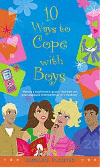 10
Ways to Cope with Boys
10
Ways to Cope with Boys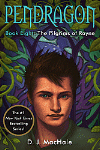
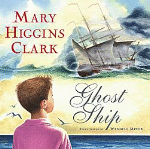 New
from Mary Higgins Clark
New
from Mary Higgins Clark 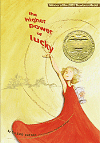 2007
Newbery Medal Winner
2007
Newbery Medal Winner 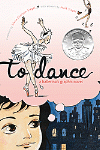
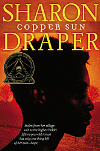 2007
Coretta Scott King Book Award winner for Text
2007
Coretta Scott King Book Award winner for Text  Cynthia
Cotton has written a new book about a young boy dealing with grief.
Michael has lost his beloved grandfather. Here is what Cynthia
had to say about writing this story:
Cynthia
Cotton has written a new book about a young boy dealing with grief.
Michael has lost his beloved grandfather. Here is what Cynthia
had to say about writing this story: Fair
Has Nothing To Do With It
Fair
Has Nothing To Do With It